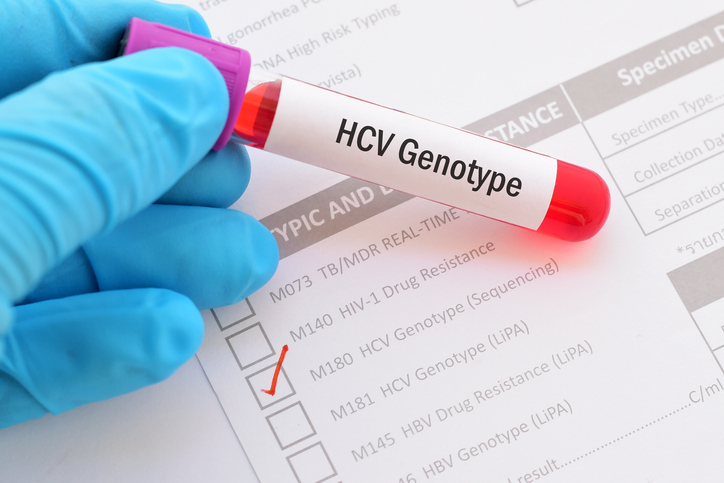The term ‘hepatitis C’ is often discussed as if it’s one disease. However, the situation is a bit more complicated, with there being six main genotypes of hepatitis C. These are numerically labeled genotypes 1-6.
The HCV testing process for patients generally starts with two main diagnostic tests: the Hepatitis C Antibody Test which notes the presence of antibodies in the blood and the RNA Test, which notes the presence of RNA made by the virus. Sometimes both tests are needed to confirm a diagnosis in a patient.
A positive result on either of those tests confirms hepatitis C infection, but another testing step is often done: genotyping. In the United States, genotype 1 is the most common genotype of hepatitis C infection, although genotypes 2, 3, and 4 are also seen in some patients.
The genotype that a patient is infected with informs treatment choices, since some medications are better suited for certain genotypes. (It should also be noted that several medications are now available as ‘pan-genotype’ and work well for all main genotypes – thus streamlining treatment.)
The genotyping of patient infections might need to adjust in the future to expanding knowledge: several new strains of the hepatitis C virus have now been documented, including genotype 7 (three strains of this) and genotype 8. So far these new genotypes and strains within a genotype have typically not been found in the U.S. However, it’s prudent to keep an eye on emerging research in case treatment protocols need to be fine-tuned here in the U.S. in the future.
Currently, for U.S. patients, faithfully following a treatment plan means that there is an exceedingly high chance that hepatitis C infection will be cured and long-term health outlook will be excellent.
Source
Davis C, Mgomelia GS, da Silva Filipe M, et al. New highly diverse hepatitis C strains detected in sub-Saharan Africa have unknown susceptibility to direct-acting antiviral treatments. Hepatology 2018;DOI:10.1002/hep.30342.
Related Posts
Every Company Has a Founder’s Story: BioPlus Specialty Pharmacy’s Starts with Patient Care
The company that would eventually become BioPlus Specialty Pharmacy was founded more than three...
Orlando Business Journal Awards BioPlus
BioPlus Specialty Pharmacy (BioPlus) earned two accolades on September 26th at the Golden 100...
BioPlus Specialty Pharmacy Ensures Continuity of Care Ahead of Dorian
BioPlus Specialty Pharmacy, one of the nation’s leading innovative specialty pharmacies, passes...
Hurricanes to Heat Domes: BioPlus Successfully Delivers Meds
Whether it’s Hurricane Elsa whipping up winds in Florida, the recent heat wave with...





